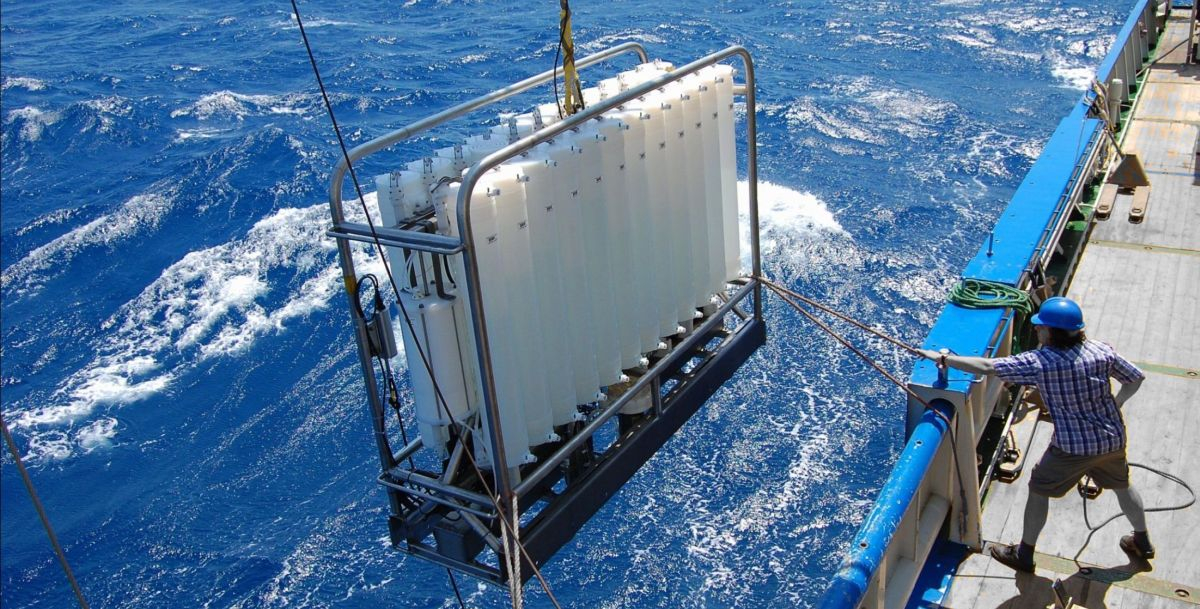Unexpected distributions of trace metals in the Mediterranean Sea
In 2013 research vessel Pelagia sailed on the Mediterranean Sea for two transects, collecting hundreds of water samples from all depths of the sea with a custom titanium sampler that also conducted conductivity temperature depth (CTD) measurements. The sampler was specially developed by NIOZ. “Every effort had been made to avoid trace metal contamination of the samples”, says lead author Rob Middag, researcher at NIOZ and professor Marine Trace Metal Biogeochemistry at the University of Groningen.

After measuring iron several years ago, the international team conducted new measurements in the same water samples for important trace metals which are essential for life in the ocean. Iron mostly originated from Saharan dust. It is blown away in sand storms and it is a vital fertilizer for algae, the base of the marine food web. But bio-essential manganese, nickel and zinc play important roles for ocean life as well, whereas cadmium is mainly seen as a contaminant, even though some algae seem to be able to use it. For all metals there is a fine balance between ‘just enough’ and higher concentrations that lead to toxicity.
Remarkable finding – man made source of metals
The team lead by Rob Middag found several interesting things. The most striking is the high concentrations of zinc and cadmium in the deep western waters of the Mediterranean Sea. It seems a human pollution source is required to explain these high concentrations. “Dissolution of anthropogenic particles, from industrial processes like waste incineration or metal smelting, is the favorite hypothesis”, says Middag. “It could originate from direct atmospheric deposition and/or resuspension from particles that were initially deposited in shallow coastal regions. We are looking into ways to find more information about its source from the water samples which we have collected and kept, for further research.”

Another new conclusion of the research team is the fact that the Mediterranean Sea is a net source of these trace metals to the Atlantic Ocean, demonstrating that local Mediterranean pollution makes its way into this ocean. Furthermore, in the surface waters, nickel and cadmium concentrations increase from west to east, the zinc distribution is more homogeneous whilst manganese is patchy. These differences illustrate that these metals have distinct behaviors and thus underline that similar processes and sources of pollution can lead to vastly different concentrations and patterns for various metals. Research at NIOZ aims at unravelling the distribution of trace metals to learn more about their role as drivers of marine life, and as toxic contaminants.
Publication
Basin scale distributions of dissolved manganese, nickel, zinc and cadmium in the Mediterranean Sea.
Middag, R., Rolison, J. M., George, E., Gerringa, L. J. A., Rijkenberg, M. J. A., & Stirling, C. H. (2022). Marine Chemistry, 238, 104063.
GEOTRACES project
Read more
